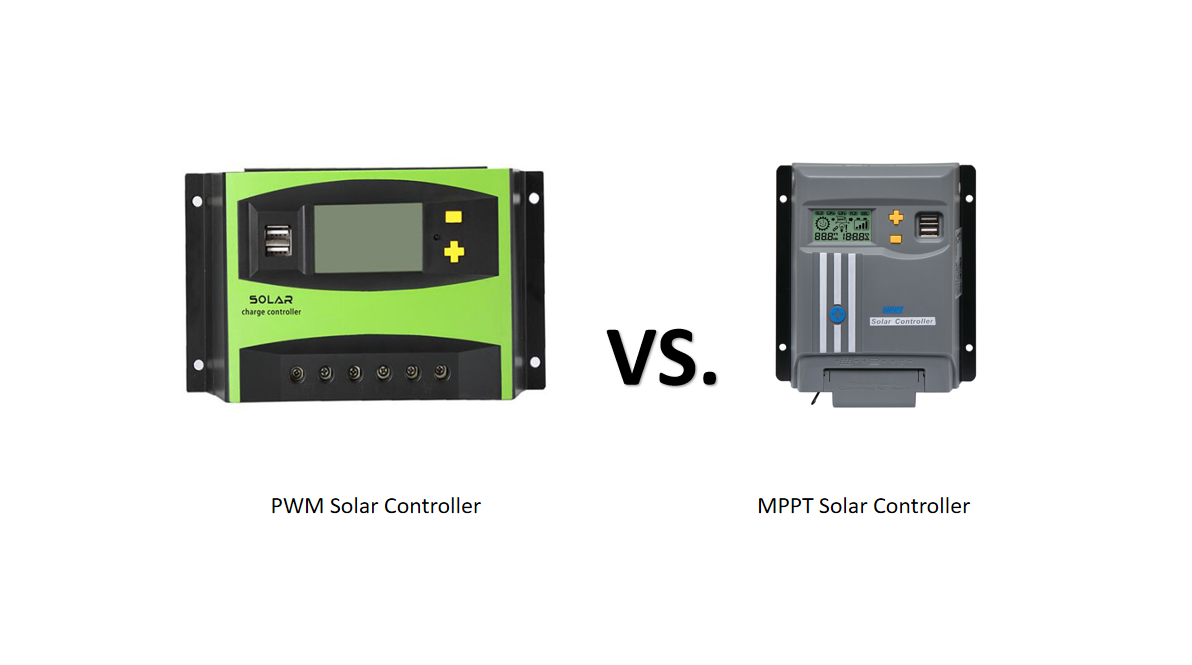With the growing demand for renewable energy, solar energy is receiving more and more attention as a clean and sustainable form of energy. As a key component in solar power systems, MPPT solar controllers are highly regarded for their superior energy harvesting and conversion performance.
In this article, we will discover the significance of MPPT Solar Charge Controllers in maximizing solar panel efficiency. Learn how these controllers track optimal power points, improve energy utilization, enhance system stability, and provide advanced protection features. Explore the differences between MPPT and PWM controllers and glimpse into the future of MPPT technology with increased energy conversion, multi-energy management, intelligence, and adaptability for diverse applications.
Definition of MPPT
The full name of the MPPT controller is Maximum Power Point Tracking, which is an upgraded product of the traditional solar charge/discharge controller.
Working principle of MPPT solar controller
The full name of the MPPT solar controller is Maximum Power Point Tracking Solar Charge Controller, and its main role is to maximize the output power of solar panels.
The MPPT controller monitors the voltage and current of the solar panel in real-time, as well as external environmental conditions such as temperature and light intensity, and regulates the output voltage and current so that the solar panel operates at the optimal power point, thereby maximizing the efficiency of energy collection.
Role of MPPT
The traditional PWM controller used in the market is relatively simple in structure and cannot realize real-time tracking, so the degree of improvement in charging efficiency is low. The MPPT solar controller can track the maximum power point of the solar panel in real-time to maximize its effectiveness, which can directly improve the power generation of the photovoltaic system, and therefore is expected to become the direction of development of solar controllers.
MPPT system is a kind of electrical system that makes PV panels output more power by adjusting the working status of electrical modules. It can effectively store the DC power output from solar panels in batteries, thus effectively solving the problem of living and industrial power consumption in remote areas and tourist areas that cannot be covered by traditional power grids, without producing environmental pollution.
Advantages of MPPT solar controller
Improve energy utilization efficiency
MPPT solar controller can track the maximum output power of solar panels in real time to maximize the efficiency of energy use. Under different light conditions, the MPPT controller can automatically adjust the working point to ensure that the solar panel is always in the best working condition, maximizing the collection and conversion of solar energy.
Improve system stability
MPPT solar controller adopts advanced electronic regulation technology, which has high stability and reliability. It can automatically adapt to different light and temperature changes, effectively resist the impact of panel output voltage fluctuations and load changes, and ensure the stable operation of the solar system.
Provide a variety of protection functions
MPPT solar controllers usually have a variety of protection functions, such as over-voltage protection, over-current protection, short-circuit protection, etc., which can effectively protect the solar panels and batteries from damage and prolong the service life of the system.
What is better MPPT or PWM?
PWM and MPPT are two different charging method controllers for solar charging that can be used to charge batteries from the current generated by solar modules. Both technologies are widely used in off-grid solar systems and both work well to efficiently charge batteries. Selecting a PWM or MPPT controller is not purely based on which charging method is “better”, but rather on which type of controller will work best in your system.
| Difference | MPPT | PWM |
| Price | 2-3 times more expensive | Cheaper |
| Service life | Short | Longer |
| Conversion efficiency | 30% higher than PWM | Lower |
| Space | Battery voltage is adjustable, solar panel voltage is adjustable, better applicability | Can only be used with the relevant voltage, suitable for off-grid systems below 2KW. |
PWM: Pulse-Width Modulation
PWM refers to the use of digital outputs from a microprocessor to control analog circuits and is a method of digitally encoding analog signal levels. Controlling analog circuits digitally can greatly reduce the cost and power consumption of a system. Many microcontrollers include PWM controllers.
Early controllers were generally of this type, with a relatively simple electrical structure consisting of a main power switch, a capacitor, a driver, and a protection circuit, which is effectively the equivalent of a switch that connects the component to the battery, with the voltage of the component being pulled down close to the voltage of the battery pack. The controller uses a three-stage charging method of strong charging, equalization charging, and float charging
- Strong charging: also known as direct charging, it is fast charging, when the battery voltage is low, charging the battery with high current and relatively high voltage.
- Equalization charging: after the end of strong charging, the battery will be placed for a period of time, when the voltage naturally drops to a certain value, it will enter the equalization charging state so that the battery terminal voltage has uniform consistency.
- The controller’s charging method can not only solve the problem of battery temperature increase but also solve the problem of battery temperature increase.
- The controller of this charging method can solve the battery charging problem, but also ensure the service life of the battery. However, it should be noted that the charging efficiency of the PWM controller will be affected by the temperature, the solar cell temperature of 45 ~ 75 ℃ or so, the charging efficiency is best.
MPPT: Maximum Power Point Tracking
To understand the difference between PWM and MPPT charging, let’s first look at the power curve of a PV panel. The power curve is important because it shows how much power the PV panel is expected to produce. PV panels produce voltage (“V”) and current (“I”). The voltage that produces the most power is known as the “maximum power point” and the MPPT will track the dynamic changes throughout the day P=U*I depending on the light conditions (P is the power produced by the PV panels)
These controllers are more complex and costly, often several or even dozens of times the size of PWM controllers, and are able to regulate the input voltage in order to get the maximum amount of energy from the solar panel.
- MPPT current-limited charging: when the voltage at the battery terminal is very small, MPPT charging is used to pump the output power of the solar panel to the battery terminal; when the light intensity is very strong, the output power of the solar panel increases, and the charging current reaches the threshold, the MPPT charging will be terminated and switched to the constant-current charging; when the light intensity becomes weaker, it will be switched to the MPPT charging mode again.
- Constant-voltage charging: The battery is freely switched between MPPT charging mode and constant-current charging mode, cooperating with each other so that the battery voltage reaches the saturation voltage and then enters into the constant-voltage charging stage, and with the gradual reduction of the battery charging current to 0.01C, this charging stage is terminated and it enters into the float charging stage.
- Constant-voltage float charging: float charging the battery at a voltage slightly lower than the constant-voltage charging voltage, this stage is mainly used to supplement the kinetic energy consumed by the self-discharge of the battery.
Compared with the PWM controller, the MPPT controller has a maximum power tracking function, before the battery has not reached saturation, during the charging period, to ensure that the solar panel always has the maximum power output, and will not be affected by the temperature, in terms of charging efficiency, naturally higher than the PWM. the other thing is that the PWM controller can only support the use of the relevant voltage, for example, the 12V system of the panel can only support the use of the 12V controller and battery. 12V controller and battery use, suitable for some small off-grid systems below 2kw, simple structure, user wiring is convenient, and the price is relatively cheap.
The Future of MPPT Solar Charge Controllers
Efficient energy conversion
Future MPPT solar controllers are likely to utilize more efficient energy conversion technologies. For example, more advanced power electronics and topologies are introduced to increase energy conversion efficiency and reduce energy losses.
Multi-energy management
With the rise of hybrid energy systems, it is likely that future MPPT solar controllers will not be limited to solar energy, but will also be able to manage multiple energy sources such as wind and water. This will allow systems to be more flexible and sustainable, maximizing the use of various renewable energy sources.
Intelligence and remote monitoring
With the development of IoT and artificial intelligence, future MPPT solar controllers are likely to have greater intelligence and remote monitoring capabilities. Through sensors and data analytics, the system can monitor and optimize energy collection in real-time, as well as remotely monitor and manage the system’s operational status, facilitating maintenance and troubleshooting.
Using in micro inverter ensures that the voltage goes through each micro inverter independently, preventing issues with one panel from affecting the performance of others in the system.
Adapting to diverse application scenarios
Future MPPT solar controllers will focus more on adapting to different application scenarios. For example, for large-scale commercial solar power plants or household PV systems, higher-power and multi-channel MPPT controllers may be developed to meet different scales and different needs for energy collection.
With the continuous innovation and development of technology, future MPPT solar controllers will further improve energy conversion efficiency, expand multi-energy management functions, and realize intelligent and remote monitoring and other functions to meet the changing market demand.













